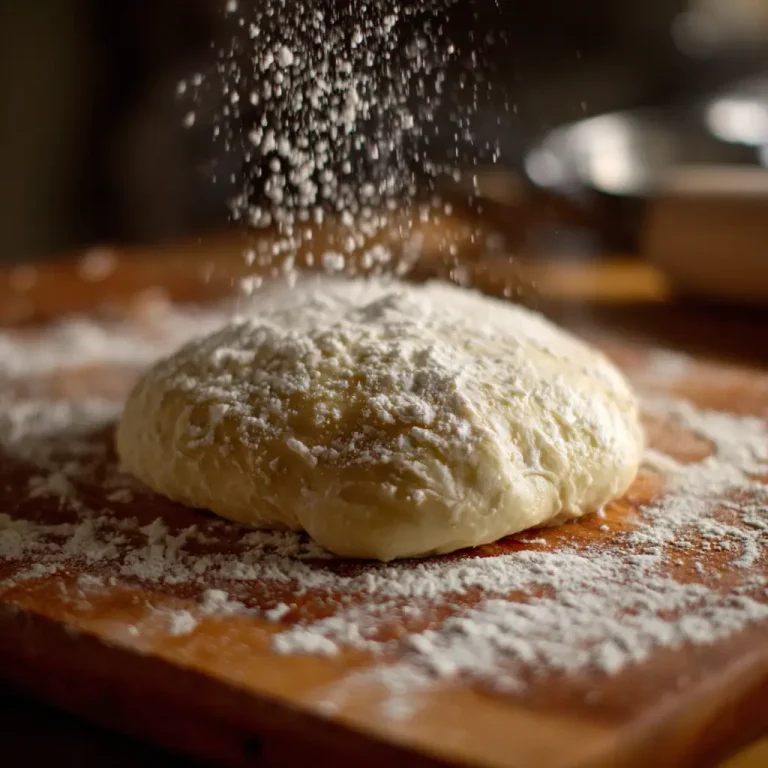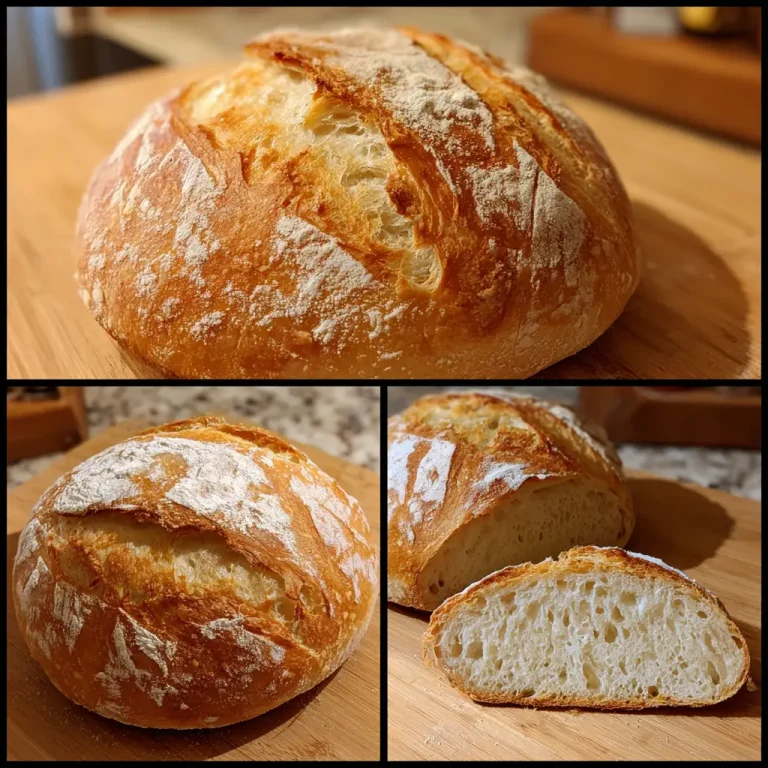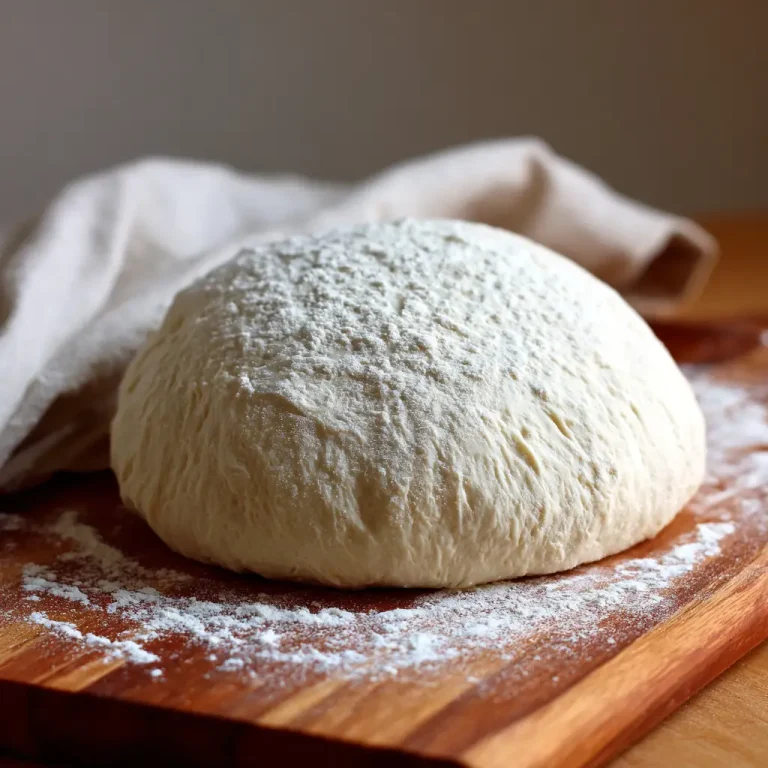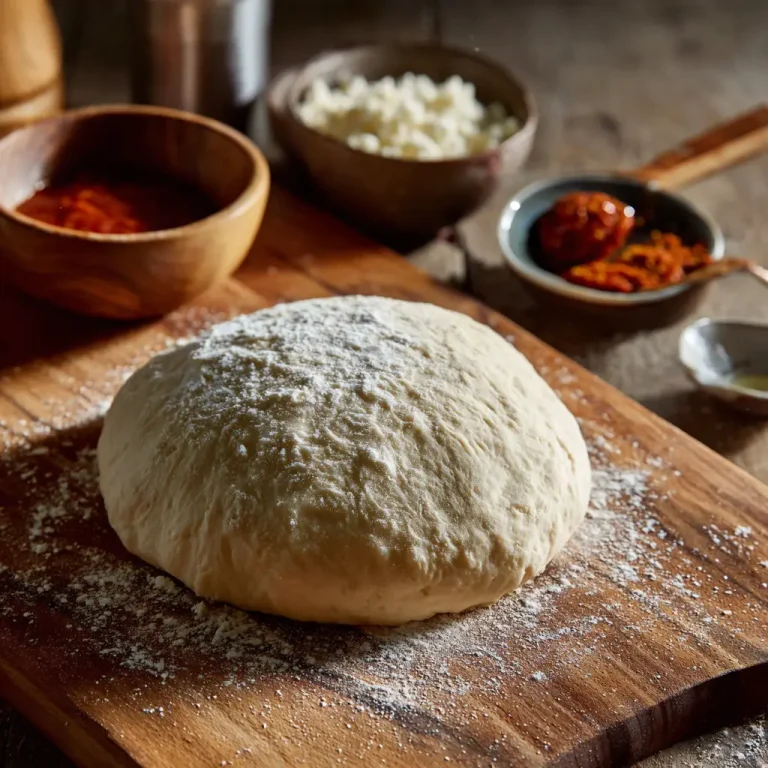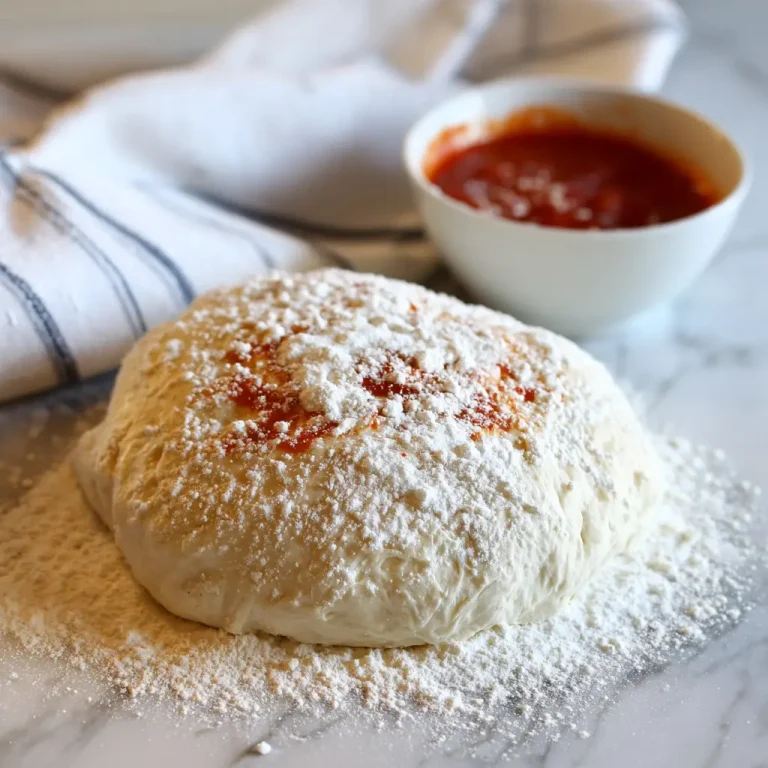Introduction
Homemade pizza always feels special, and it often comes down to one important detail: the dough. A well prepared dough creates a crust that is soft and chewy on the inside with a golden crisp on the outside. Many people believe that pizza dough is difficult to make, but in truth, it only requires a few ingredients and a little patience. The process allows the dough to develop flavor and texture, and the result is far superior to anything pre packaged. Once you understand the basic steps, making your own dough becomes an enjoyable part of the cooking experience rather than a chore.
The beauty of crafting the best pizza dough recipe lies in its versatility. You can use it for a thin crust pizza, a fluffy pan style pizza, or even smaller creations like calzones and breadsticks. The key is in balancing the yeast, flour, and water so the dough rises properly while maintaining just the right texture. By learning how to make your own pizza dough, you gain the ability to transform any gathering into a restaurant quality pizza night. The smell of fresh dough baking in the oven fills the home with warmth and excitement, setting the stage for a meal that everyone will enjoy.
Ingredients Needed
| Ingredient | Quantity | Calories (approx.) |
|---|---|---|
| All purpose flour | 4 cups | 1820 |
| Warm water | 1 and ½ cups | 0 |
| Active dry yeast | 2 and ¼ teaspoons | 21 |
| Olive oil | 3 tablespoons | 360 |
| Sugar | 2 teaspoons | 32 |
| Salt | 2 teaspoons | 0 |
Total calories for the dough: approx. 2233
Calories per slice (based on 12 slices): approx. 186
Step-by-Step Cooking Instructions
- Begin by adding warm water to a large mixing bowl. Sprinkle in the yeast and sugar, then let it sit until the surface becomes foamy. This activation ensures the dough will rise properly.
- Next, stir in olive oil and salt, blending gently to combine.
- Slowly add flour, mixing a little at a time until the dough begins to form.
- Transfer it to a lightly floured surface and knead for about eight minutes. The texture should feel smooth and elastic.
- Place the dough in a greased bowl, cover it with a clean cloth, and set it aside in a warm place for one to two hours until it doubles in size.
- Once risen, punch down the dough to release excess air. Divide into portions depending on the number of pizzas you wish to make.
- Roll out each portion into the desired shape and thickness. Thin crusts will bake quickly while thicker crusts will be softer and chewier.
- Preheat your oven to 475 degrees Fahrenheit and prepare your pizza toppings.
- Place the rolled dough on a pizza stone or baking sheet, add sauce, cheese, and toppings, then bake for 10 to 12 minutes until golden and crisp.
- Allow the pizza to rest for a few minutes before slicing and serving.
Tips for Customizing the Recipe
The best part about making pizza dough from scratch is the ability to customize it. For a heartier crust, try replacing one cup of all purpose flour with whole wheat flour. If you enjoy a richer flavor, add a teaspoon of garlic powder or dried Italian herbs directly into the dough. For an extra airy crust, let the dough rest in the refrigerator overnight and bake the next day. This slow fermentation deepens the flavor and improves the texture. For those who love thin crust pizzas, roll the dough out as thin as possible and bake on a hot pizza stone for a crispy bite. Each adjustment creates a slightly different but equally delicious version of the dough.
Nutritional Information
One serving of homemade pizza dough, when divided into twelve slices, contains about 186 calories. Most of the calories come from carbohydrates, with flour being the main ingredient. Each slice offers roughly 4 grams of protein and 2 grams of fat, primarily from the olive oil. While this recipe is higher in carbs, it provides energy and pairs well with balanced toppings like vegetables, lean meats, or plant based alternatives. By controlling the ingredients, you can also reduce sodium or adjust the type of flour to meet specific dietary needs.
Serving Suggestions
Fresh pizza dough can be shaped and baked into more than just pizza. It works beautifully for calzones stuffed with cheese and vegetables, garlic breadsticks brushed with butter and herbs, or flatbreads served with dips. For family pizza night, prepare a variety of toppings and let everyone build their own pizza on a personal portion of the dough. It makes the meal interactive and fun. If you prefer something lighter, top the crust with fresh vegetables, a drizzle of olive oil, and a sprinkle of herbs for a Mediterranean style pizza. The dough also pairs well with sweet toppings, turning it into a dessert pizza with fruit, cream cheese, or chocolate.
Conclusion
Pizza dough is at the heart of a great pizza, and making it from scratch brings a sense of satisfaction that store bought versions cannot match. The process is simple yet rewarding, and the result is a crust that can be tailored to any style or taste. With its soft interior, crisp exterior, and versatile nature, this recipe ensures you will always have the perfect base for your favorite toppings. Once you try it, homemade pizza dough may easily become a staple in your kitchen, ready to elevate your meals from ordinary to extraordinary.

